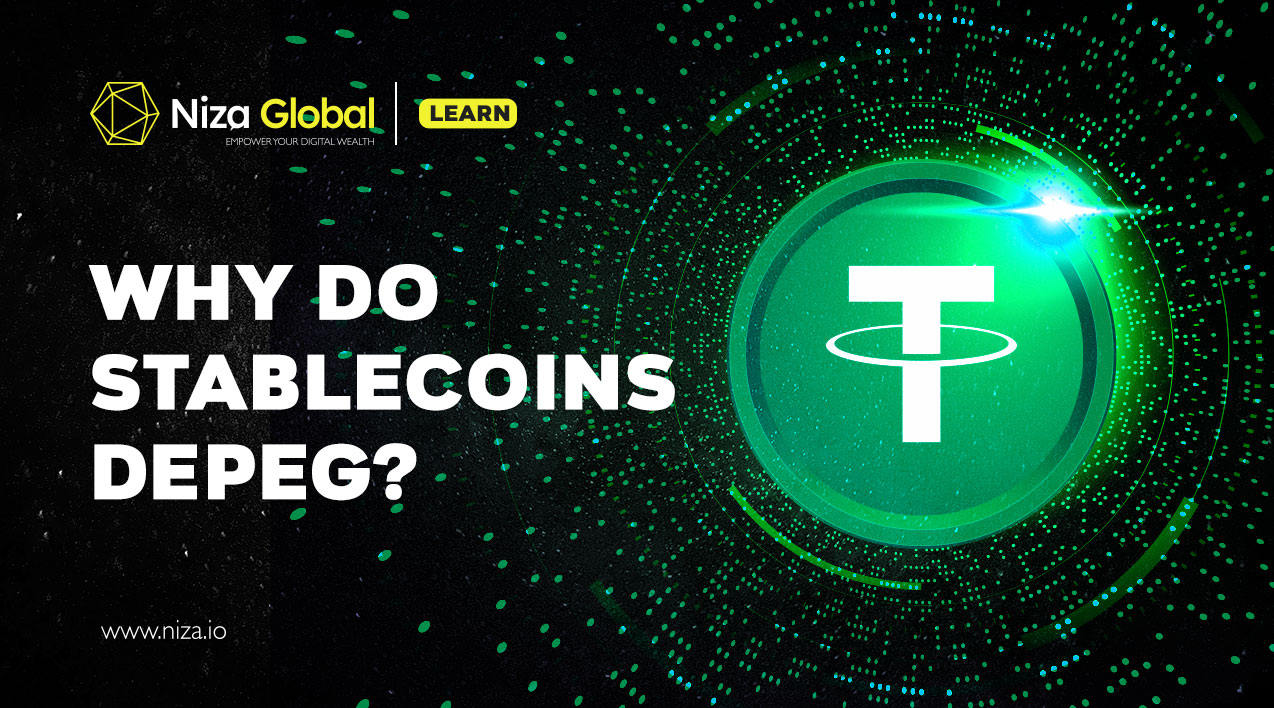Stablecoins are digital assets designed to maintain a fixed value, often pegged to a specific asset like a fiat currency. Despite their stability-oriented design, stablecoins can sometimes lose their peg, deviating from their intended value due to factors such as market conditions, liquidity challenges, and regulatory shifts. Understanding why stablecoins depeg can help users make informed decisions in the digital asset space.
What Is a Stablecoin Depeg?
Stablecoins are meant to hold a consistent value by being tied to an underlying asset, such as the US dollar. However, their value can sometimes fluctuate, leading to a phenomenon known as “depegging.” A depeg occurs when a stablecoin’s market price strays significantly from its intended value.
Depegging can be either temporary, with minor fluctuations that quickly correct themselves, or severe, leading to substantial financial losses. Various factors, including liquidity shortages, extreme market movements, or regulatory actions, can contribute to these deviations.
Why Do Stablecoins Depeg?
Stablecoins may lose their peg for several reasons:
- Market Volatility: A sudden surge or drop in demand for a stablecoin can create an imbalance, leading to price deviations. If there isn’t sufficient liquidity to accommodate these shifts, the stablecoin may struggle to maintain its peg.
- Inadequate Collateralization: Many stablecoins are backed by assets at a 1:1 ratio. For example, fiat-backed stablecoins typically hold reserves in cash or bonds to support their supply. If these reserves are insufficient or mismanaged, confidence in the stablecoin can erode, resulting in a depeg.
- Regulatory Pressures: Government regulations or enforcement actions can impact stablecoins, especially if their issuers face legal challenges. Regulatory crackdowns can lead to reduced trust and liquidity, contributing to price instability.
- Smart Contract or Algorithmic Failures: Algorithmic stablecoins rely on smart contracts to balance supply and demand. If these mechanisms fail due to a bug or unexpected market conditions, the stablecoin can lose its peg.
- Network Congestion: In blockchain ecosystems, high transaction fees and network congestion can limit arbitrage opportunities, preventing traders from correcting price imbalances efficiently.
How Do Stablecoins Maintain Their Peg?
Stablecoins use different methods to maintain their stability:
- Collateralized Models: These stablecoins are backed by reserves such as fiat currency, commodities, or other cryptocurrencies. Ensuring transparency and adequate collateral is crucial to maintaining trust and stability.
- Algorithmic Adjustments: Some stablecoins use smart contracts to automatically adjust supply and demand. However, this approach can be risky if market conditions overwhelm the algorithmic controls.
- Arbitrage Mechanisms: Traders help stabilize stablecoins by taking advantage of price differences. When a stablecoin falls below its peg, arbitrageurs buy it at a discount and redeem it for the full value, helping restore balance.
The Impact of Stablecoin Depegging
A depegging event can have significant consequences for the broader crypto market. It can undermine confidence in stablecoins, disrupt financial transactions, and cause substantial losses for investors and issuers. Given their role in decentralized finance (DeFi), stablecoin instability can ripple across multiple platforms, affecting lending, borrowing, and trading activities.
Understanding the risks associated with stablecoins and their mechanisms for maintaining stability can help users navigate the evolving digital asset landscape with greater confidence.


